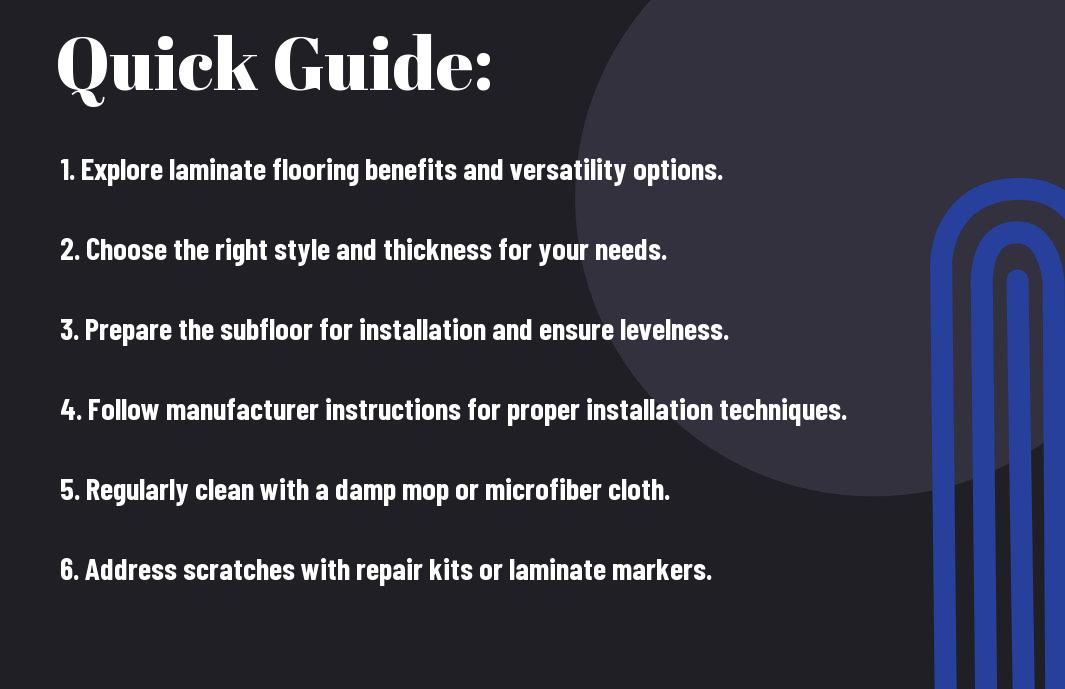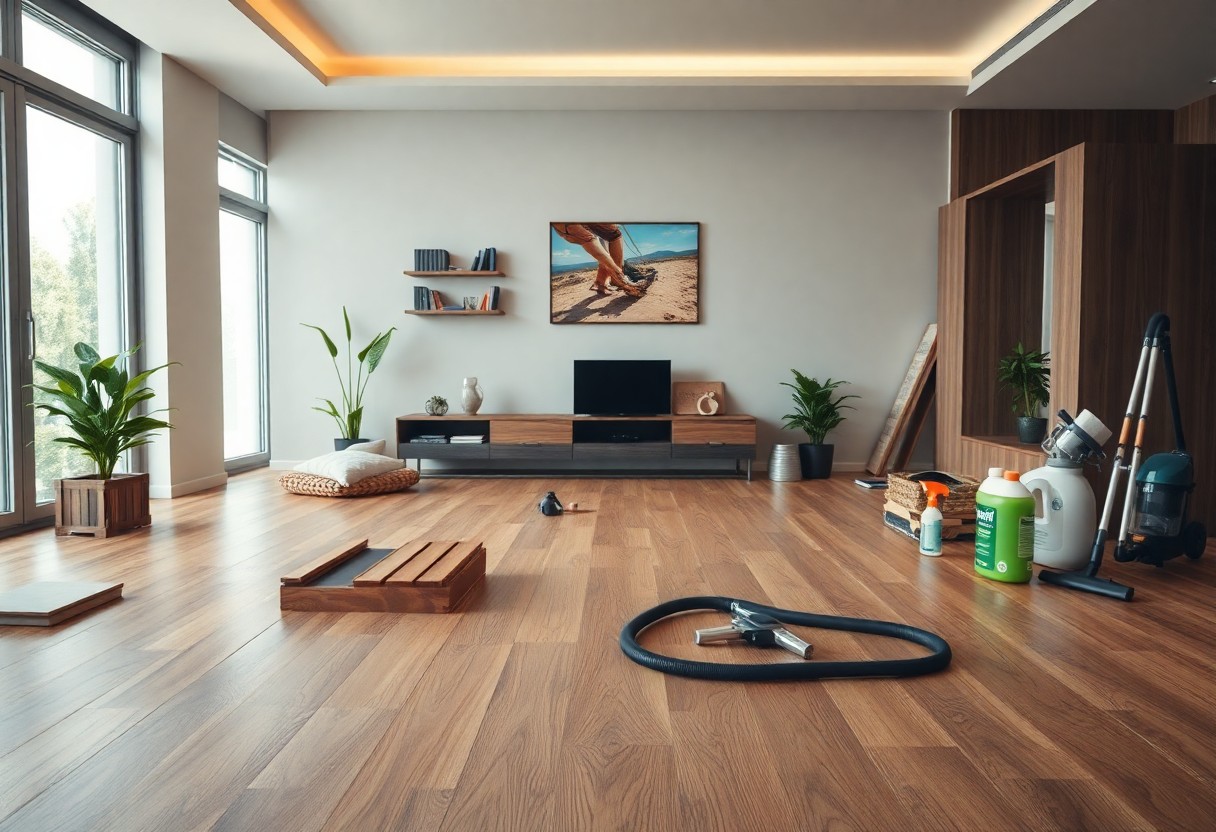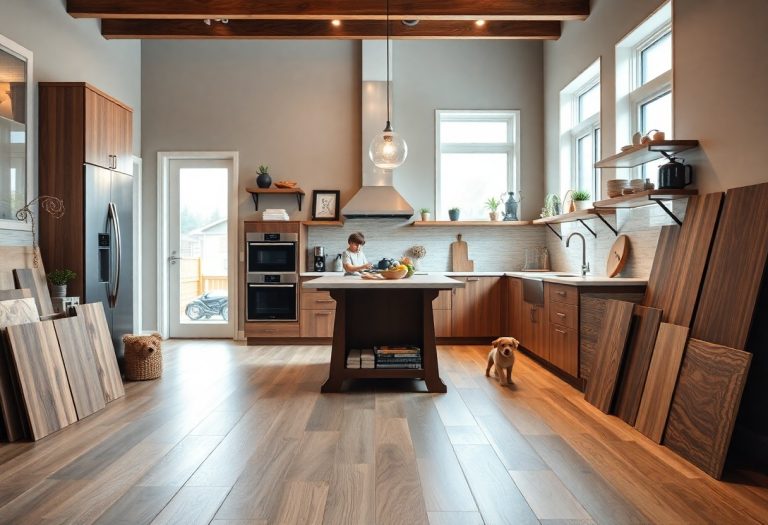There’s a wealth of information to explore when it comes to laminate flooring, and this ultimate guide is designed specifically for you. Whether you’re considering laminate for its stylish appearance or practical benefits, this guide covers everything you need to know, from installation tips to effective maintenance strategies. Prepare to enhance your space with a flooring solution that combines durability and aesthetic appeal, empowering you to make informed decisions every step of the way.


Types of Laminate Flooring
While selecting laminate flooring, you will find several types designed to suit your needs and preferences. Understanding these types can help you make an informed decision. Here’s a brief overview:
| Type | Description |
| High-Pressure Laminate | Durable and resistant to moisture, suitable for high-traffic areas. |
| Direct Pressure Laminate | Ideal for residential use, offers a good balance of cost and durability. |
| Wood Laminates | Provides a natural wood look, making your space aesthetically appealing. |
| Stone Laminates | Offers the appearance of stone at a fraction of the cost. |
| Eco-Friendly Laminate | Made from sustainable materials, a great choice for environmentally conscious consumers. |
Perceiving the differences between laminate types can help you choose the best option for your home.
High-Pressure Laminate
Even though high-pressure laminate (HPL) has a higher price point, it offers exceptional durability that stands up to heavy foot traffic and moisture. HPL is constructed under high pressure, making it resistant to wear and tear.
Direct Pressure Laminate
Little time is needed to install direct pressure laminate (DPL), making it a popular choice for homeowners looking for quick and easy flooring solutions. This type is generally less expensive and ideal for residential areas.
Direct Pressure Laminate is made by fusing the layers of laminate flooring under lower pressure than HPL. This results in a product that is still durable and aesthetically pleasing, making it an excellent option for everyday spaces in your home. The cost-effectiveness combined with a decent lifespan makes DPL a suitable choice for budget-conscious homeowners.
Benefits of Laminate Flooring
You will discover that laminate flooring offers numerous advantages, making it a popular choice for homeowners. From its stylish appearance to its versatility, laminate flooring mimics the look of natural wood or stone while providing a cost-effective and practical solution for any space. It is also easy to install, maintain, and clean, allowing you to enjoy beautiful floors without the hassle.
Cost-Effectiveness
An appealing feature of laminate flooring is its cost-effectiveness. It provides the luxurious look of hardwood or tile at a fraction of the price, allowing you to achieve a high-end aesthetic without breaking the bank. This affordability ensures that you can enhance your home’s interior without compromising your budget.
Durability and Maintenance
For those seeking a flooring option that withstands the test of time, laminate flooring is an excellent choice. It is resistant to scratches, dents, and fading, making it ideal for high-traffic areas in your home. Additionally, maintaining laminate is simple; regular sweeping or vacuuming and a damp mop are all that’s needed to keep it looking pristine.
Benefits of laminate flooring extend beyond just its visual appeal; its durability is a standout feature. With a robust wear layer, it is designed to resist daily wear and tear, making it perfect for families, pets, and busy households. Furthermore, it is also designed to resist moisture, ensuring that it retains its integrity even in areas like kitchens and bathrooms. This low-maintenance flooring allows you to spend less time on upkeep and more time enjoying your beautiful home.
Pros and Cons of Laminate Flooring
Now, understanding the pros and cons of laminate flooring can help you make an informed decision for your space. Below is a breakdown of the advantages and disadvantages to consider before installing laminate flooring.
Pros and Cons Table
| Pros | Cons |
| Cost-effective | Can scratch easily |
| Diverse design options | Not as durable as hardwood |
| Easy installation | Water damage potential |
| Low maintenance | Can feel less premium |
| Resistant to fading | Poor acoustics |
| Eco-friendly options | Limited refinishing |
| Comfort underfoot | Less warmth than carpet |
| Hypoallergenic | Inflexible in temperature changes |
| Quick cleaning | May expand/contract with humidity |
| Enhances resale value | Subfloor preparation needed |
Advantages
To fully appreciate laminate flooring, you should consider its many advantages. It is budget-friendly, offering a stylish appearance that can mimic natural materials such as wood or stone. The easy installation process allows for quicker transformation of your space. Additionally, laminate flooring requires minimal maintenance compared to hardwood, with simple cleaning being all that’s needed to keep it looking great.
Disadvantages
Cons you may encounter with laminate flooring include its susceptibility to scratching and lack of durability compared to hardwood. While laminate can withstand everyday wear and tear, any sharp objects can leave marks that are hard to remove.
Another significant drawback is the potential for water damage, which may warp or swell under extreme conditions. Additionally, laminate flooring tends to feel less premium underfoot and can produce poorer acoustics than other flooring options. It may also expand or contract with humidity changes, requiring careful installation and consideration for the subfloor preparation needed before laying it down.
Factors to Consider Before Installing
Despite the many advantages of laminate flooring, several factors must inform your decision before installation. Consider the following:
- Your budget and overall cost
- The type of laminate suitable for your space
- Subfloor conditions
- Room usage and traffic levels
- Natural lighting and aesthetic preferences
Assume that taking these elements into account will lead to a successful installation and overall satisfaction with your choice.
Room Usage
For your home, the intended use of each room will significantly impact the type of laminate flooring you should choose. High-traffic areas, like hallways and kitchens, may benefit from more durable options, while bedrooms might allow for a softer, more aesthetic-focused choice.
Climate and Environment
Environment also plays a role in your laminate flooring choice. Consider the humidity levels and temperature fluctuations in your area, as excessive moisture or dryness can affect the longevity and appearance of the flooring.
Plus, understanding your local climate helps you make informed decisions about floor types that resist warping or buckling. For instance, if you live in a humid area, opting for a water-resistant laminate can provide additional protection against moisture-related issues, ensuring your flooring remains beautiful and functional for years to come.
The Step-by-Step Installation Guide
All homeowners looking to enhance their space will benefit from a well-organized installation process. This section breaks down the entire laminate flooring installation into manageable steps, ensuring you can achieve a professional result with minimal hassle. Follow these guidelines closely for a successful DIY project.
Preparation and Tools Needed
| Preparation Steps | Clear the room of furniture, and ensure the subfloor is clean, dry, and level. |
| Tools Required | Measuring tape, saw (preferably a miter saw), spacers, tapping block, pull bar, and safety gear. |
Preparation and Tools Needed
StepbyStep preparation sets the foundation for a smooth installation. Start by clearing your space, ensuring the subfloor is clean, dry, and even. Gather important tools such as a measuring tape, saw, spacers, tapping block, and pull bar to facilitate a seamless experience.
Installation Process
StepbyStep installation begins once your preparation is complete. Start by laying down an underlayment if required, followed by the first row of laminate planks. Ensure the planks lock together properly and use spacers to allow for expansion. Continue this process row by row until you complete the floor.
Tools play an important role in the installation process. Efficient cutting tools, like a miter saw, help you achieve perfect edges, while spacers ensure there’s room for expansion around the perimeter. Using a tapping block and pull bar will minimize gaps, allowing the planks to fit snugly together without damage. Following these steps closely will lead you to a successful floor installation.
Maintenance Tips for Longevity
To ensure your laminate flooring remains in excellent condition for years, regular maintenance is necessary. Follow these simple tips:
- Use a damp mop for routine cleaning.
- Avoid excess moisture to prevent warping.
- Place mats at entryways to minimize dirt and debris.
- Keep furniture pads under heavy items to avoid scratches.
- Vacuum or sweep regularly to eliminate dirt buildup.
Perceiving these maintenance practices as part of your flooring routine will enhance its durability.
Cleaning Techniques
Tips for cleaning your laminate floor effectively include using a specialized laminate cleaner or a mix of vinegar and water to avoid damaging the surface. When mopping, ensure your mop is just damp, not soaking wet, as excess moisture can lead to warping or discoloration.
Preventive Measures
Measures such as using protective pads on furniture legs and avoiding rubber-backed rugs can help maintain the integrity of your laminate flooring. Keeping your pets’ nails trimmed is also beneficial and regularly checking for small scratches and repairing them promptly will preserve your floor’s appearance.
Plus, maintaining a stable humidity level in your home is vital; too much humidity can cause warping, while too little can lead to gaps between planks. Additionally, consider placing area rugs in high-traffic areas to protect against wear and tear and reposition furniture occasionally to distribute weight evenly and avoid indentations.
Conclusion
With this in mind, you are now equipped to make informed decisions about laminate flooring for your home. From understanding the numerous benefits it offers, to effectively installing and maintaining it, you can enhance your space with confidence. By following the tips and guidelines outlined in this guide, you can ensure your laminate flooring remains beautiful and durable for years to come, making it a worthwhile investment in your home’s aesthetics and functionality.





